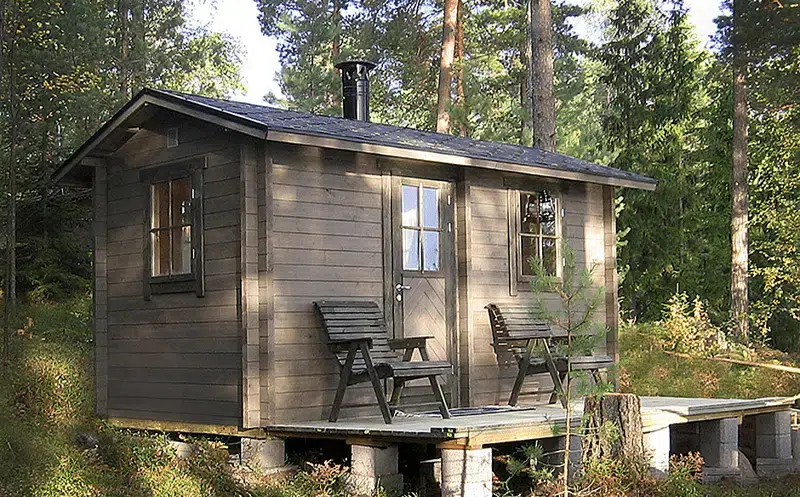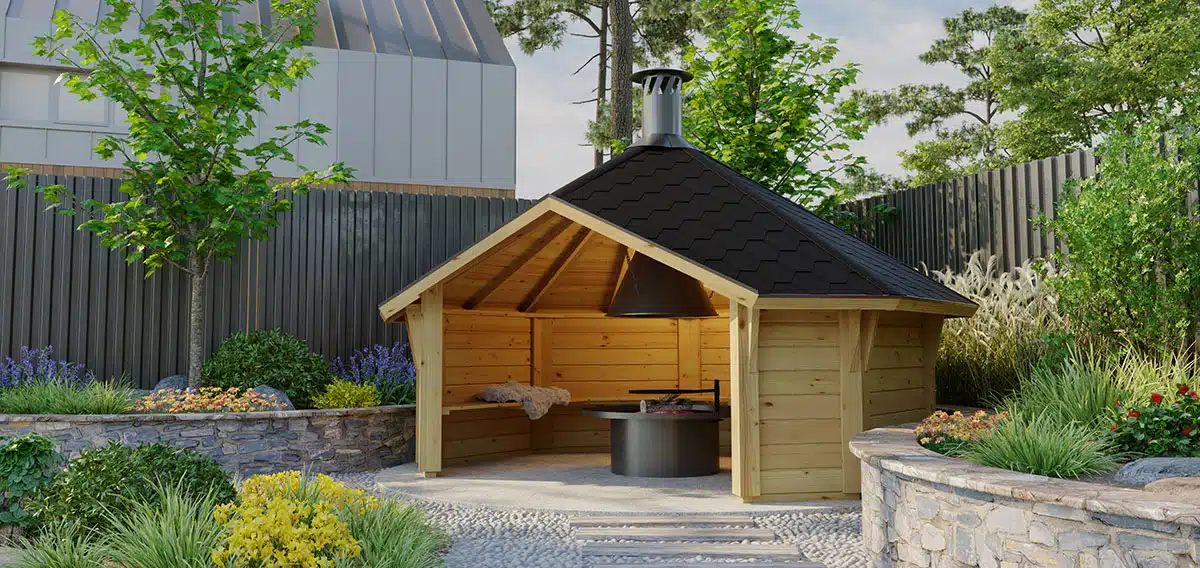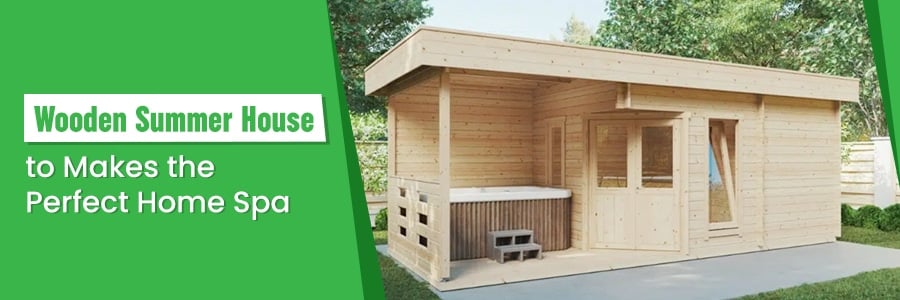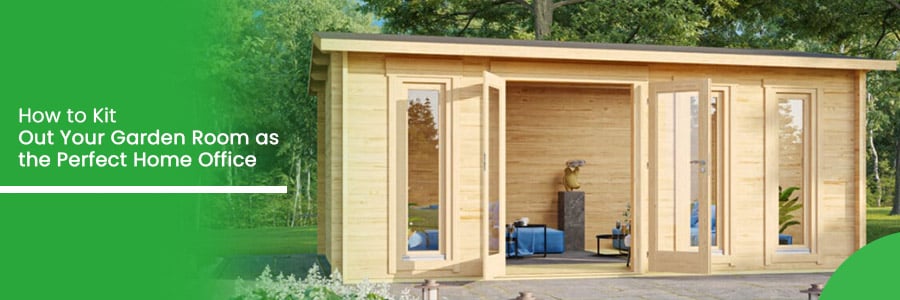How to Get Your Own Log Cabin in Ten Simple Steps
19.05.2018
An inhabitable log cabin is not only an extremely versatile building but also provides living space at an extraordinary high value for money ratio. However, the second part is only true, if you purchase a log cabin with a warranty from the portfolio of a large log cabin builder with a strong commitment to quality.
On the other side, having an architect plan your own individual log cabin will enable you to get fantastic results in terms of spaciousness and architectural style, but it will also drain your budget much in the same way as building any house would do. The mechanized processing of the logs in large factories, and the production of larger quantities of each model is the major factor that makes standardized log cabin models from large manufacturers so affordable. The designs and floor plans are well planned and reliable, optimized by constant cooperation with customers who all voiced their individual demands to a certain model, so that the designs could be customized to the most popular demands.
Having said this, it seems only logical to look at the process of purchasing your own log cabin in ten simple steps.
The ten simple steps to your own inhabitable log cabin
The first five steps to your inhabitable log cabin can all be characterized as thorough planning. The final five steps consist of actions of purchasing and construction.
- Planning: Know your demands – usage
- Locate a good location for your new inhabitable log cabin
- Get the necessary information from your local building authorities about which factors will be relevant for the building permit.
- Surf the internet to find a log cabin model that fits your needs
- Contact the manufacturer for more information and enter a planning process about possible individual modifications
- Cut the deal, sign the contract and transfer the money
- Prepare your construction site
- Assemble your new log cabin
- Involve craftsmen for electricity, water and sewage
- Wood treatment and furnishing
Let’s have a short closer look on each of these steps:
Planning: Know your demands – usage
Inhabitable log cabins can be used as a main home for a single person or a family, they can serve as weekend cottage, as holiday homes, or can even be rented out as a holiday lodge. They are used as clubhouses, dressing rooms, exhibition pavilions, or they provide cheap and functional office – or workspace for fast growing companies. In private gardens a log cabin may give shelter to a private fitness centre, a spa, a outdoor sauna, a work shop, a garden room for guests, or a garden office. No need to mention that for all these usages different features, like window sizes, wall thicknesses, floor plans and general sizes may fit the needs of the customer.
The same is true if you are looking forward to building your own inhabitable log cabin to live in with your family or as a single person.
If you want to build a log cabin, the very first step must be to define the intended usage as clearly as possible: How many rooms do you need? Do you want a room for every purpose or would you rather like an open floor plan? Using an inhabitable log cabin to live in permanently might require other demands to the log cabin for example in regard to insulation and therefore wall thickness than an only periodic usage would.
Location for your new inhabitable log cabin
Can you fall back on a fully developed building location for your log cabin? Or are you planning an – at least partly – off-grid life somewhere in the woods or in the middle of nature? Such locations as you might be able to make available for yourself on private land on farms or in privately managed forests, on camping grounds near a lake, river, or the sea are often best suited for a holiday home or a weekend cottage.
Depending on the available infrastructure you will plan water supply, electrical, heating, and waste water for your log cabin and that again may require different features like for example roof loads if you plan for solar panels on the roof.
Not least the size and shape of your new log cabin needs to be in sink with your available space on the building site.
Check with your local building authorities
Local building regulations may be different in all these different places. So, as soon as you are relatively sure about your needs and thus size, features, usage and shape of the inhabitable log cabin, and the location, you might have to check in with local building authorities to explain about your plans and get the necessary clearances and building permit.
Keep in mind that manufacturers will in many cases be able to modify their models to any demands by you or the authorities.
Surf the internet to find a log cabin model that fits your needs
Of course you might also look in large DIY stores or in local exhibitions, but the internet just offers such an incredible large choice of different models and features that surfing the internet might simply be the more time-efficient method.
Moreover, due to the immense competition of different manufacturers, the prices also are usually quite competitive.
Contact the manufacturer of your chosen log cabin model
As soon as you got one or a few models in your shortlist, you will want to contact the manufacturer for more specific information. Also, most manufacturers will offer to modify their model to suit your specific needs. Position of windows, roof load, wall thicknesses in different areas, strength of the floor boards and many more features can be modified.
Many manufacturers will also do this as a free service for you, but probably you would have to pay if your modifications require additional material.
Cut the deal, sign the contract and transfer the money
And with that done, you will already be the lucky owner of your own inhabitable log cabin. The manufacturer will then tell you how long you will have to wait for the delivery and you will have some time to
Prepare your construction site
Levelling, draining, pouring a foundation. After all, you will want to have a perfectly dry spot for your log cabin where it will live long without any contact to ground moisture. A perfectly levelled surface will also be essential for the building process to go smoothly.
Your manufacturer will provide you with a perfectly exact floor plan that you can use to make the foundation just as you need it. You can also follow our manual on how to make foundations for your log cabin.
Already in this stage you should prepare all necessary infrastructure like electrical connections, water, and sewage, so that you will have all of these at the right places. If you are insecure how to do it right, contact a local construction company for advice and help or purchase a package from your manufacturer that includes the construction.
Assemble your new log cabin
Your new log cabin will arrive in one or more large packages in weatherproof packaging. Our advice would be to leave it there until you have a couple of dry and sunny days ahead to assemble the log cabin. Unless you have a barn to store all parts dry, keeping the packages unopened will be the best protection against the weather.
If you have decided to assemble your log cabin yourself, all parts will be numbered and a detailed construction manual will be part of the package.
Involve craftsmen for electricity, water and sewage
To build a log cabin to live in with all the necessary infrastructure is not so easy. At least for electricity it is often recommended getting the help of a local craftsman. If you plan heating with burning ovens, the same applies there. After you have invested a considerable sum of money and quite a large amount of time to finally get your own dream-home, you will not want to spoil it and risk having problems for the years to come because of some avoidable mistakes in the final stages of the process.
Wood treatment and furnishing of your new inhabitable log cabin
Do you prefer the natural light colour of the natural timber or do you like a darker colour, that also might offer some protection against UV-radiation? Wood treatment together with insulation are also factors that will determine if you will live in a breathable house or have it completely secluded against any air exchange. Timber offers the opportunity to create a home that is ecological and free of any harming chemicals if you wish so. Breathable wood treatment and insulation are viable and highly efficient options.
After all the construction work is finished, you will have your log cabin to yourself to furnish it according to your personal preferences.
Want to discuss over phone. Let us call back to you
If you need any additional info regarding any product, please fill in the below form and we will get back to you, usually the same or next working day.
Have any questions regarding some product?
If you need any additional info regarding any product, please send us your questions.




